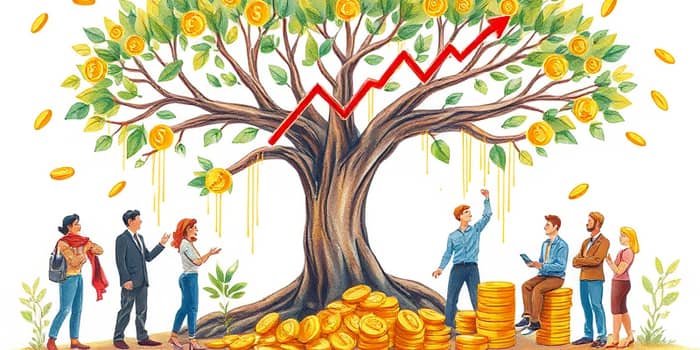
Every investor faces the same tantalizing question: “Is now the right moment?” This compelling urge to predict highs and lows, rooted in emotional and cognitive biases, drives many to attempt the impossible—perfectly timing each market move. Yet history shows that even the most seasoned professionals seldom beat simple, steady strategies. By allowing fear and greed to steer decisions, individuals risk missing the best days and undermining their own progress. In contrast, embracing a plan where contributions remain consistent regardless of market noise cultivates resilience, fosters sustainable long-term wealth building, and transforms uncertainty into opportunity. This article explores why consistent investing far outweighs the fleeting allure of market timing.
It’s tempting to believe that one possesses some hidden insight or secret algorithm to forecast the next rally or downturn. The media headlines proclaim every twist and turn, as if the market were a puzzle waiting to be solved. But these narratives often mask deeper truths: price swings are capricious, driven by countless variables from global events to collective psychology. Chasing peaks and troughs demands relentless attention and opens investors to enormous emotional and cognitive distress that can lead to costly mistakes. By contrast, a consistent approach prioritizes steady progress over fleeting victories, providing a buffer against regret and second-guessing.
Decades of research confirm that trying to time entry and exit points often backfires. For instance, staying fully invested in the S&P 500 over 25 years could turn $1,000 into around $4,477. Yet missing just ten of the best trading days slashes that growth to about $1,993, and skipping twenty best days reduces it further to roughly $1,159. These standout days frequently follow extreme downturns, making them almost impossible to predict. Professional traders, armed with cutting-edge tools, rarely outperform a passive, long-term approach. Such data overwhelmingly favors consistent investing and underscores why patience triumphs over speculation.
While those statistics may seem abstract, they represent real sums of money and lost opportunity costs. Timing the market demands flawless foresight, which research shows is as likely as predicting the weather months in advance. Instead of toggling dashboards and hunching over charts, an investor who stays the course can reap the benefits of market recoveries without the burden of constant decision-making.
Remaining invested through various market cycles enables individuals to capture critical recovery days often missed by market timers. Each downturn carries the seed of the next upswing, and those rebound days can account for a disproportionate share of long-term growth. Attempting to lock in gains or evade short-term losses can result in sitting on the sidelines precisely when the market surges. By focusing on time in the market over timing, investors harness compound growth’s full potential. This approach reduces anxiety, fosters confidence, and demonstrates how small, but consistent, incremental actions accumulate into transformative results.
Dollar-cost averaging, or DCA, involves investing a fixed sum at regular intervals regardless of asset price. This disciplined approach smooths the purchase price over time, mitigating the impact of market swings. By committing to contributions whether markets are rising or falling, investors cultivate automatic, disciplined investment habit that counters the urge to guess short-term direction. Empirical studies show that over multi-decade horizons, DCA often outperforms attempted timing strategies, delivering both higher returns and reduced stress. For many individuals, it provides a simple framework to build wealth without needing to interpret every market twitch.
Human psychology poses a formidable barrier to successful market timing. Decisions fueled by fear of missing out often trigger late buying after peaks, while panic during downturns can lock in losses. Recency bias skews perception, making recent events seem more predictive than they are, and confirmation bias leads investors to seek information that supports their already-formed beliefs. Without an objective guardrail, even seasoned traders can fall prey to these traps, eroding long-term returns. Recognizing these tendencies is the first step toward adopting strategies that align with both financial goals and emotional well-being.
Some advocates of active trading highlight occasional success stories, suggesting that with enough research and intuition, timing can yield superior profits. While a handful of investors may experience outsized gains, the broader evidence exposes the pitfalls. Market timing demands constant vigilance, specialized knowledge, and often substantial resources. For most, the time spent monitoring charts and news could be better allocated to strategic planning or personal pursuits. By understanding that impossibly predict market movements is more a myth than achievable goal, individuals can reorient their focus toward reliable, proven methods that amplify results.
At its core, investing is about participation and patience. The journey toward financial independence is not a sprint but a marathon in which steady contributions over time build momentum and forge lasting success. While the siren call of market timing may promise quick wins, it often ends in regret and underperformance. By embracing a consistent approach—whether through lump-sum allocations, automatic withdrawals, or dollar-cost averaging—investors remove the guesswork and align with the market’s natural rhythms.
Ultimately, the greatest advantage lies not in predicting the next market peak but in committing to regular action. Time favors the patient, and history shows that time in the market over timing remains the most dependable catalyst for transforming modest savings into enduring wealth.
References













